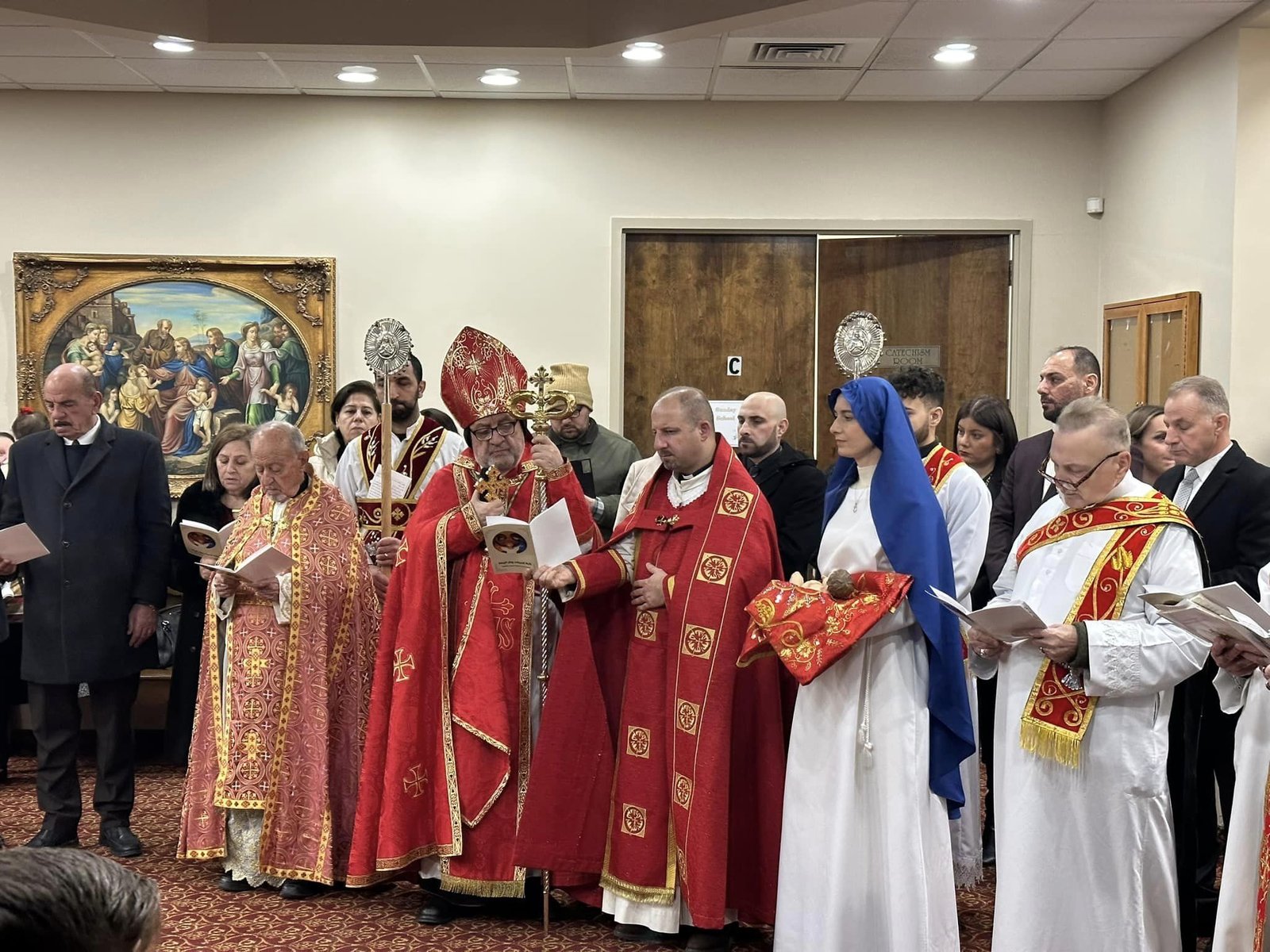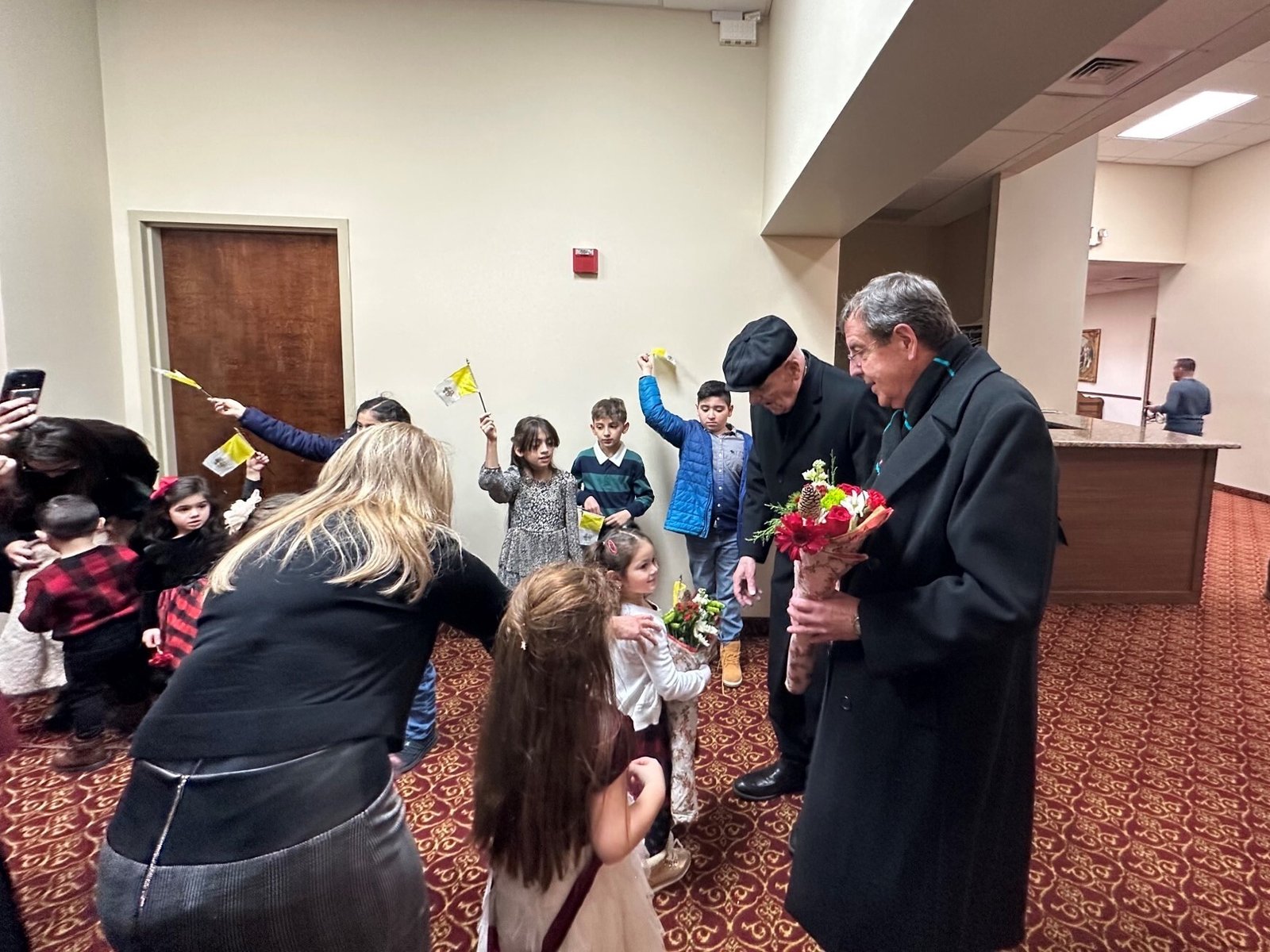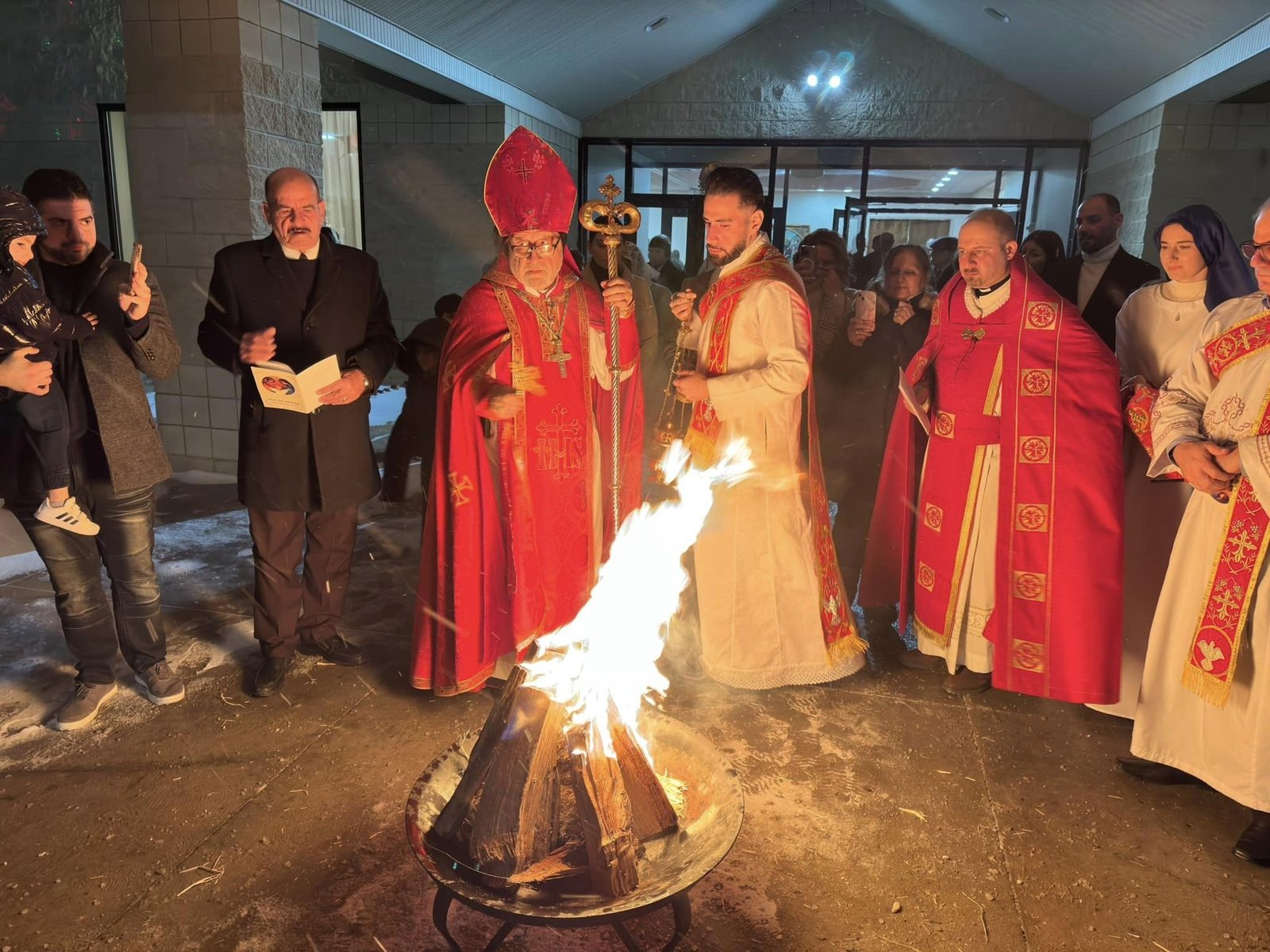St. Toma Syriac Cathedral in Farmington Hills is the new spiritual epicenter for 16,000 Syriac Catholics across U.S.
FARMINGTON HILLS — St. Toma Syriac Catholic Church in Farmington Hills has always been a “cradle” of Syriac Catholic faith and traditions in the United States.
It was the first church erected outside of the Middle East to serve Eastern-rite Syriac Catholics, including refugees and Catholics from Iraq, Lebanon and Syria making a new home in Metro Detroit, where automotive and manufacturing jobs were plentiful.
On Nov. 6, 1995, recognizing the growing need to spiritually care for Syriac Catholics in the North American diaspora, Pope St. John Paul II erected the Syriac Catholic Eparchy of Our Lady of Deliverance, responsible for the pastoral care of Syriac Catholics in the United States and Canada, headquartered in New Jersey.
While today, the eparchy is home to approximately 16,000 Syriac Catholics spread across eight U.S. states (the Canadian parishes were broken off to form a new apostolic exarchate in 2016), the Catholic community of St. Toma and two other Michigan Syriac parishes have continued to serve the largest concentration of Syriac Catholics outside the Middle East.
“St. Toma is the cradle for the Syriac Catholic diocese in the United States,” Bishop Yousif Benham Habash, the eparchy’s second and current eparch, told Detroit Catholic. “We love this church, and we are proud of this first Syriac Catholic church in the west.”
Twenty-seven years later, St. Toma is now officially the eparchy’s cathedral, with Pope Francis approving a move of the episcopal seat from St. Joseph Cathedral in Bayonne, N.J., to Farmington Hills on July 1, 2022.
Bishop Habash, who was named eparch by Pope Benedict XVI in 2010, following then-Bishop Joseph Younan (now patriarch of Antioch and All the East), said the decision to move the cathedral to southeast Michigan has been a long time coming.
“When I became bishop, it was not really practical (to have our cathedral in New Jersey) because it was very hard to follow the needs of the diocese, of the parishes and missions,” Bishop Habash said. “The biggest part of our diocese is in Detroit. We have three parishes — two in Detroit (St. Toma in Farmington Hills and Christ the King in Troy) and one in Lansing (St. Isaac of Ninevah). So, logically, the bishop should be here with the people and the priests.”
Along with the Michigan parishes, the eparchy has parishes or missions in New Jersey, Pennsylvania, Massachusetts, Florida, Illinois, California and Arizona.
Besides being centrally located, Michigan is home to approximately 200,000 Iraqi-Americans, most of whom belong to either the Chaldean or Syriac churches. The Chaldean Eparchy of St. Thomas the Apostle, led by Bishop Francis Y. Kalabat, is also headquartered in southeast Michigan.

Bishop Habash said the three Syriac parishes in Michigan care for approximately 1,200 families — many of whom have relatives in the Middle East.
“We have a lot of refugees from Iraq and the Middle East, and we don’t like to be just empty hands,” Bishop Habash said. “We have the treasure of the Eastern heritage of the apostolic churches of the Antiochian Syriac rite, the teachings of the Eastern part of the Church, and the opportunity to provide an American education to prepare for the future, to find vocations here. We are very optimistic.”
Bishop Habash expressed gratitude to the Archdiocese of Detroit, and to Detroit Archbishop Allen H. Vigneron, for the archdiocese’s hospitality, noting the archbishop celebrated a liturgy with the St. Toma community on the feast of the Immaculate Conception, Dec. 8.
The Archdiocese of Detroit was instrumental in the founding of St. Toma in the first place, Bishop Habash added. Before the Syriac eparchy was established in 1995, Syriac Catholics in the United States were under the pastoral care of their local Latin-rite dioceses.
“We cannot but be thankful for the Archdiocese of Detroit,” Bishop Habash said. “Before 27 years ago, this church was supported by the archdiocese. First of all, they provided the land we have for the Cathedral of St. Toma in Farmington Hills. Then, the same archdiocese gave us a loan to build the actual church.”
Bishop Habash noted the significance of St. Toma becoming the Syriac cathedral for the United States, since St. Thomas the apostle was known for his missionary outreach to the far east.

“We consider ourselves a missionary diocese of the Syriac Catholic heritage,” Bishop Habash said. “Along with the patriarchate (in Beirut, Lebanon), we work for the growth of our people and never forget our Antiochian Syriac origins and heritage.”
While much of the pastoral work of the Syriac parishes in the United States is in English, the eparchy works to preserve the original Aramaic spoken by Jesus, Mary and the apostles in its liturgies, Bishop Habash said.
“Outside of the Aramaic, we keep using the Arabic language,” Bishop Habash said. “The first generation of immigrants don’t speak English, especially the elderly. As for the youth today, they cannot help but use the English language.”
Although the eparchy is part of the Syriac church — one of 23 Eastern Catholic churches in communion with the pope — Bishop Habash said the eparchy is also part of the U.S. Conference of Catholic Bishops and collaborates with Latin-rite dioceses across North America. The U.S. bishops, along with the apostolic nuncio to the United States, were consulted in the eparchy’s decision to move its see, he said.
For years, Catholics in Iraq, Lebanon and other Middle Eastern countries have faced brutal persecution, being driven from their homelands in staggering numbers, Bishop Habash said. For this reason, it’s critically important that they’re able to find a welcoming spiritual home in places like southeast Michigan, he said.

“We are proud of our Syriac Antiochian heritage because the name means a lot,” Bishop Habash said. “When we say ‘Antiochian,’ we are talking about the church of St. Peter, the first diocese he came to. After Peter, it was St. Ignatius of Antioch, the pearl of the Antiochian heritage.”
St. Ignatius, one of the church’s first martyrs, showed the world what it means to be a joyful witness in the face of hardship — a lesson for all Catholics, but especially those of Antiochian heritage, Bishop Habash said.
“Even when we are in the middle of the persecutions of an unjust world, when we read the letters of St. Ignatius of Antioch, we are expected to be creatures of joy and peace, no matter the persecutions,” Bishop Habash said. “Where can we find this joy? There’s no way to find it outside of Jesus.”
“We can buy pleasures, but we cannot buy joy,” Bishop Habash continued. “Joy is not the stuff of markets. Joy comes from and is provided by the word of God. This joy comes from one source, which is our Christian faith. That drives our mission. We believe strongly that we are missionaries of joy and peace.”
Copy Permalink
Syriac












